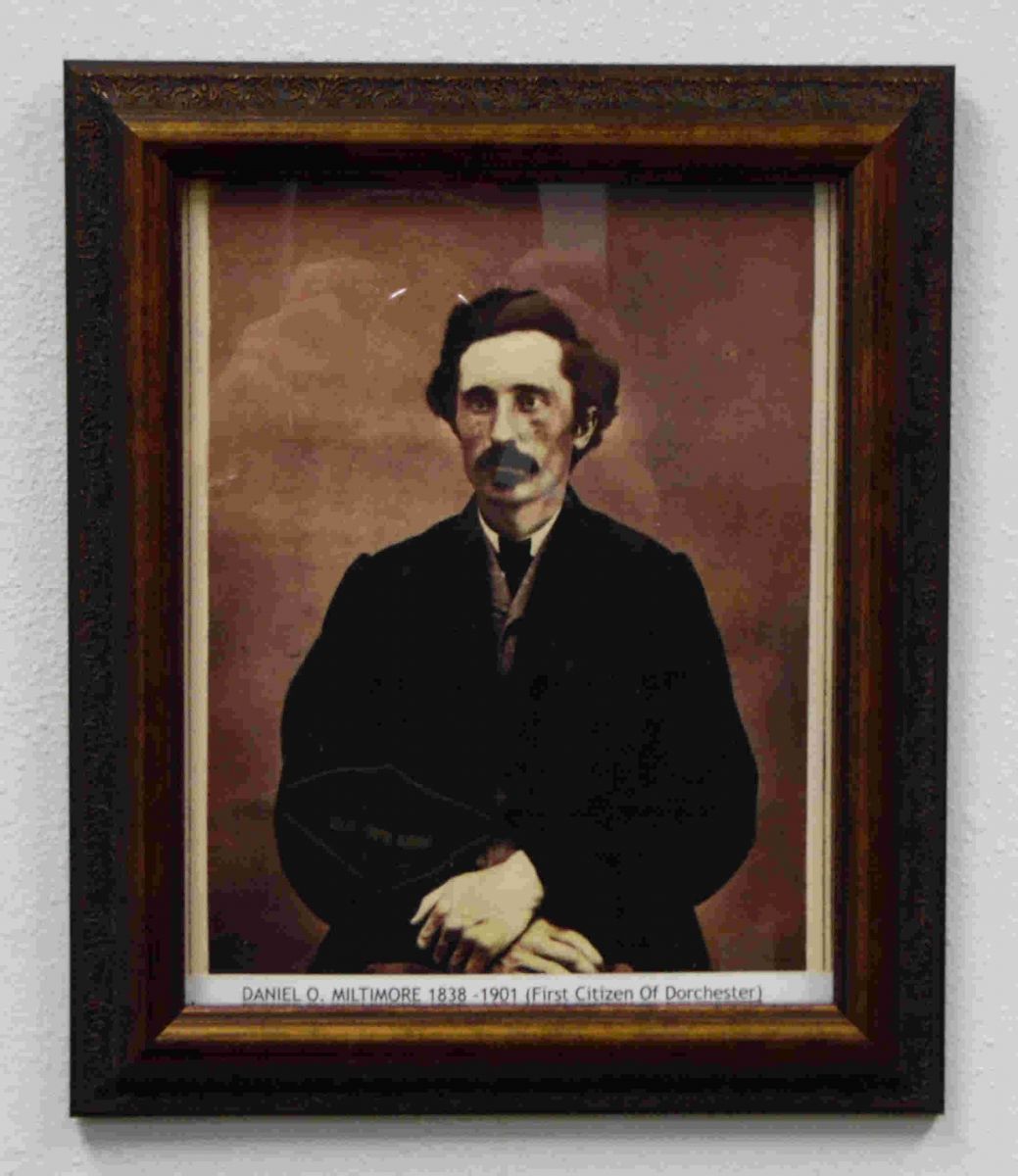Artifacts: 26 - 50
Artifact no. 26 – The three cast iron banks in the front were given out to customers of the Dorchester State Bank during the good old days of the 1920s. The red one was donated by Tootie Engel in 2009 and the other two were donated by the Dorchester State Bank in 2015.
The bottles in the back were found in the basement of the old hardware store which was built in 1895 by Frederick Gutwasser. Fred had two hardware stores that burned down; the first in 1886 and the second in 1895. The age of the bottles has not been determined.
.jpg)
Artifact no. 27 - This rusty piece of steel is one of four anchors that stabilized the 155 foot tall Dorchester Water Tower during times of high winds. The water tower was installed in 1940 and served the community of Dorchester until it was removed in 2002. The water tower held 50,000 gallons of water in the tank and another 18,000 gallons in the standpipe. The anchor was donated by Ron Robida in 2015.
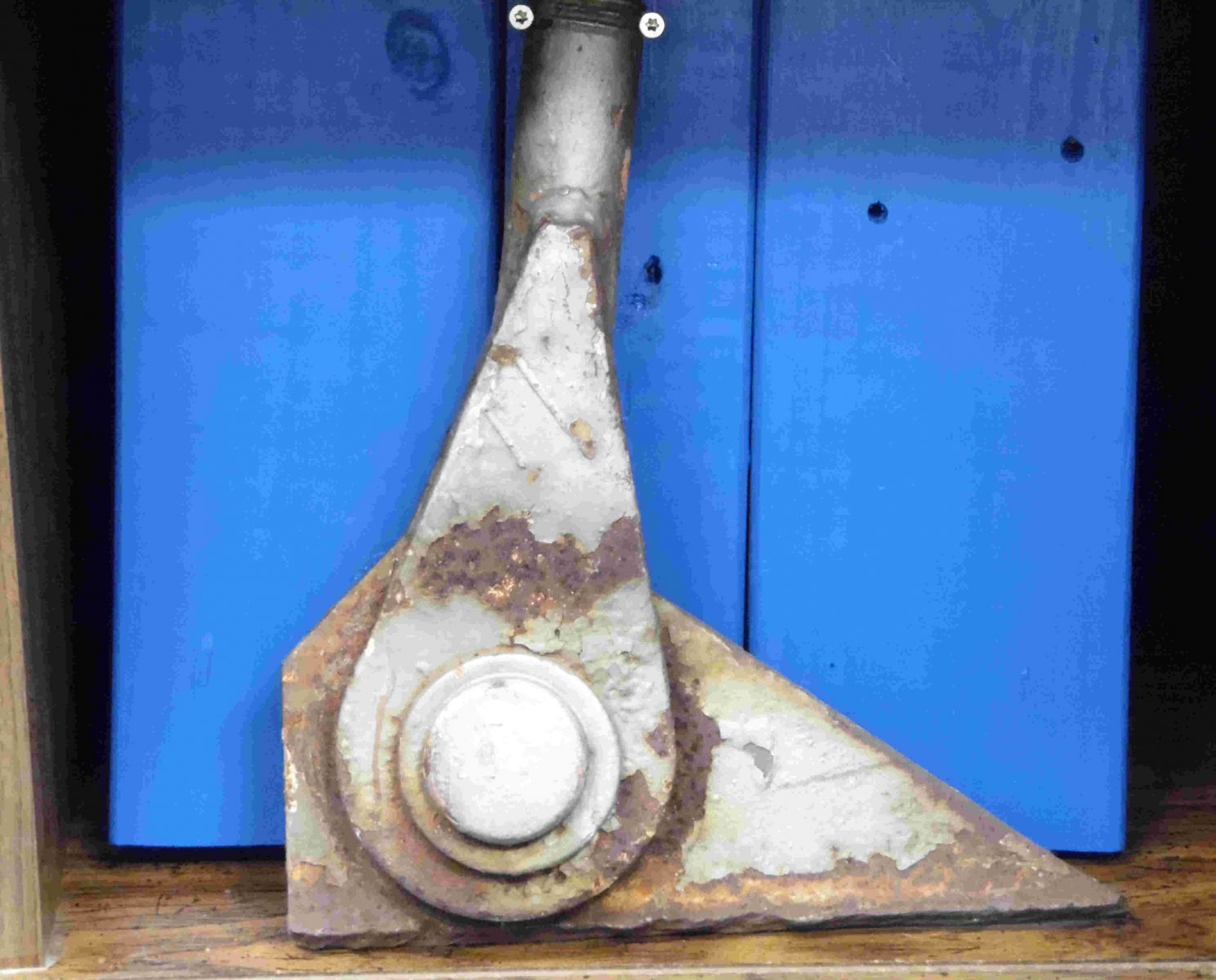
Artifact no. 28 - These Lions Club Hats are three of the various style hats worn by members of the Lions Organization. The Dorchester Lions Club got its start in Dorchester in 1956 and it continues an active organization to this day. Considering how many organizations are coping with the new style of living in this country; that in my opinion is an amazing feat. This year they will reach the 60 year mark. Quite an accomplishment. These hats were donated by the Dorchester Lions Club in 2012.
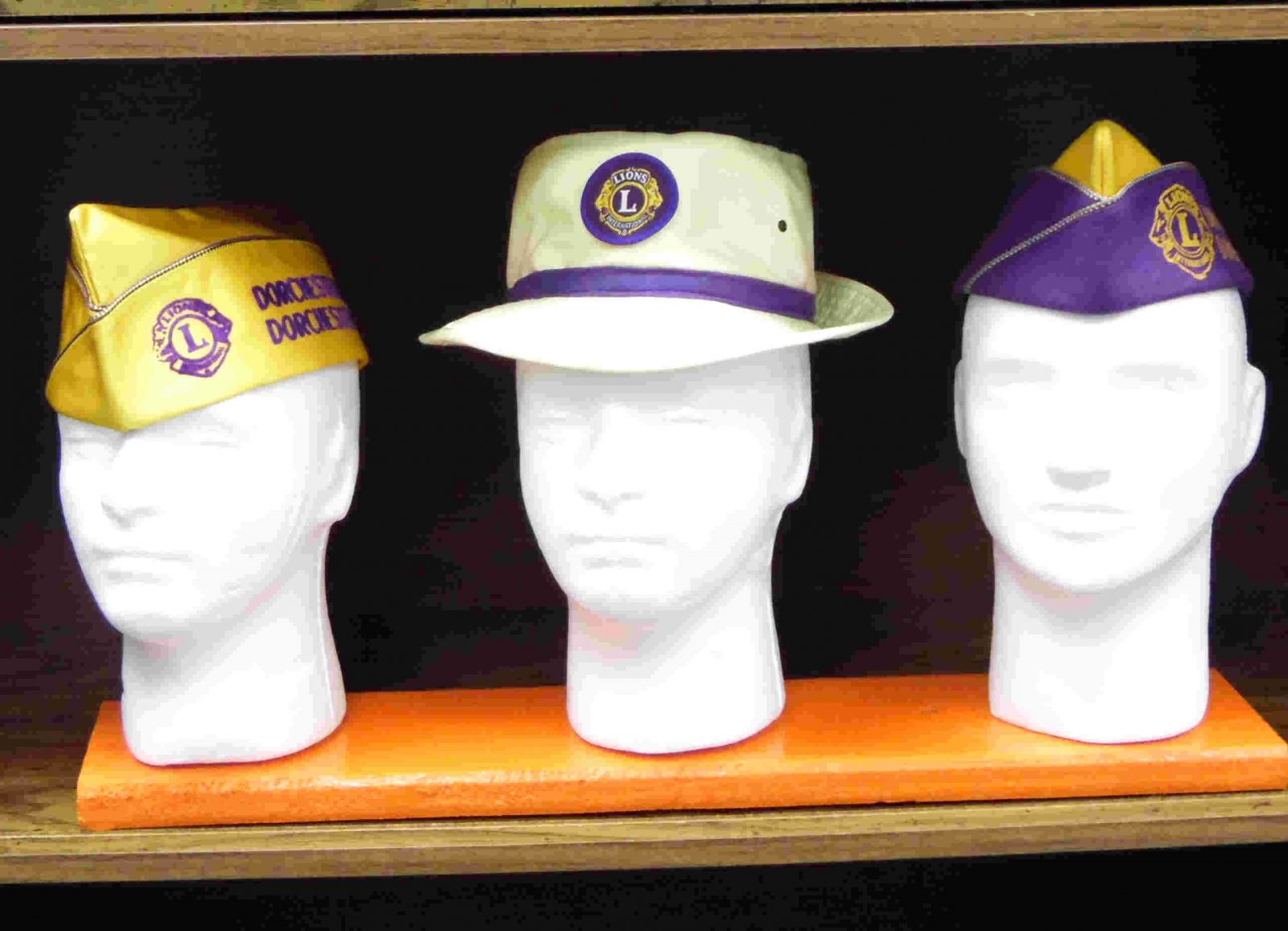
Artifact no. 29 – This coat is the official Lion's Club Coat and is worn for both informal and formal occasions. For example: Lion members attending a fellow Lion member's funeral would wear the coat displaying to all that their friend and fellow member was a trusted and revered member of the Lions Club. The jacket was also donated by the Dorchester Lion's Club in 2012.
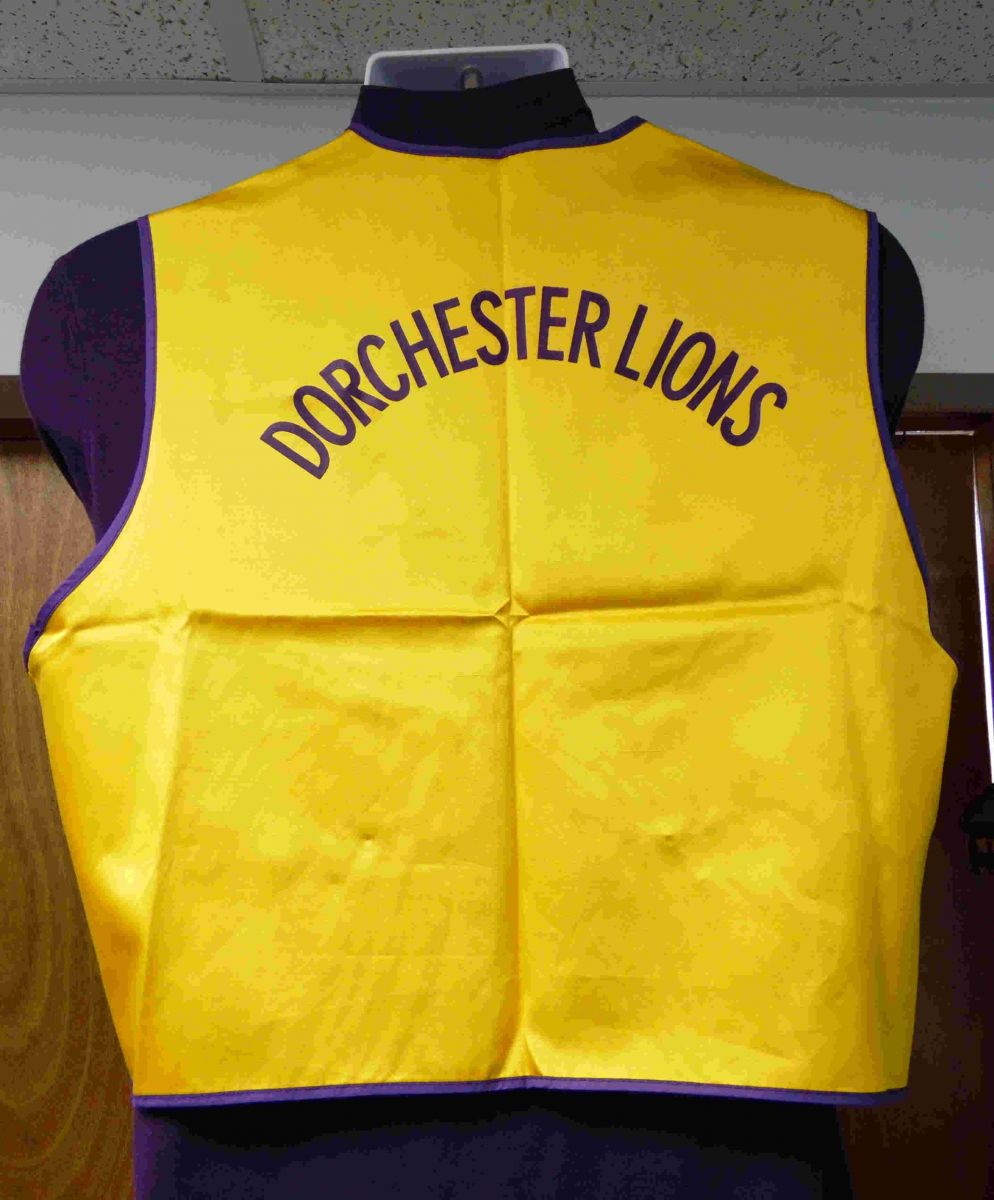
Artifact no. 30 – This electric religious table lamp was first used at the St. Louis Rectory in 1920 when electricity came to the community. Father Stuhlmann was the priest and pastor of St. Louis Parish at that time. At the top of the shade; you will see crosses and at the bottom of the shade; you will see upside down crosses and it resembles Jesus on the Cross and St. Peter on a cross upside down. The lamp is made from cast brass and is extremely heavy. The Candle is from St. Louis Church from the 1930s.
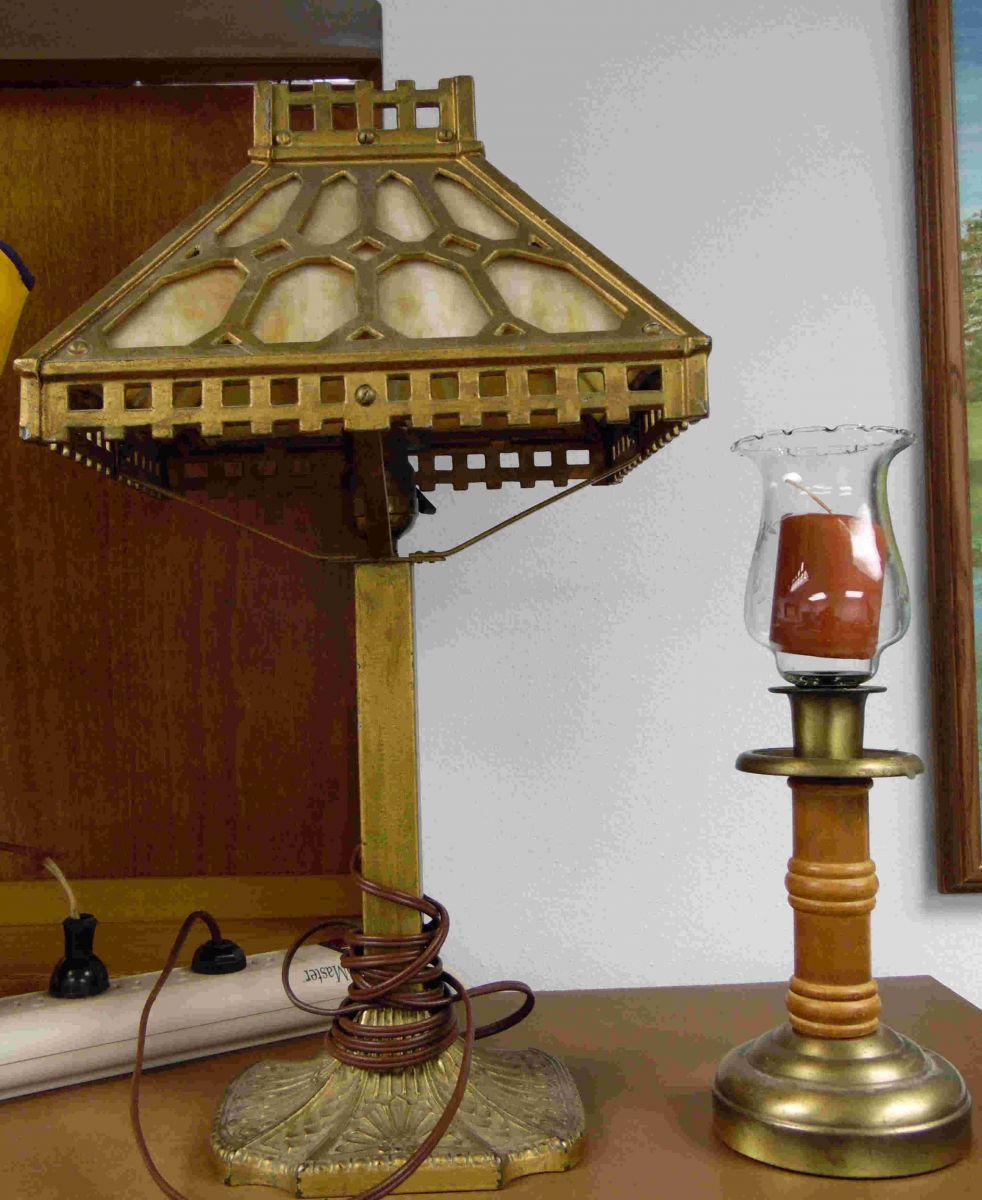
Artifact no. 31 – Max Vircks was one of the first major bee keepers in Wisconsin. He was an influential member of the Wisconsin Bee Keepers Organization and held many titles in that organization. It is not certain exactly when Max started raising bees but it is believed he started in the 1920s. Dennis Reynolds donated the Max Vircks can in December 2015.
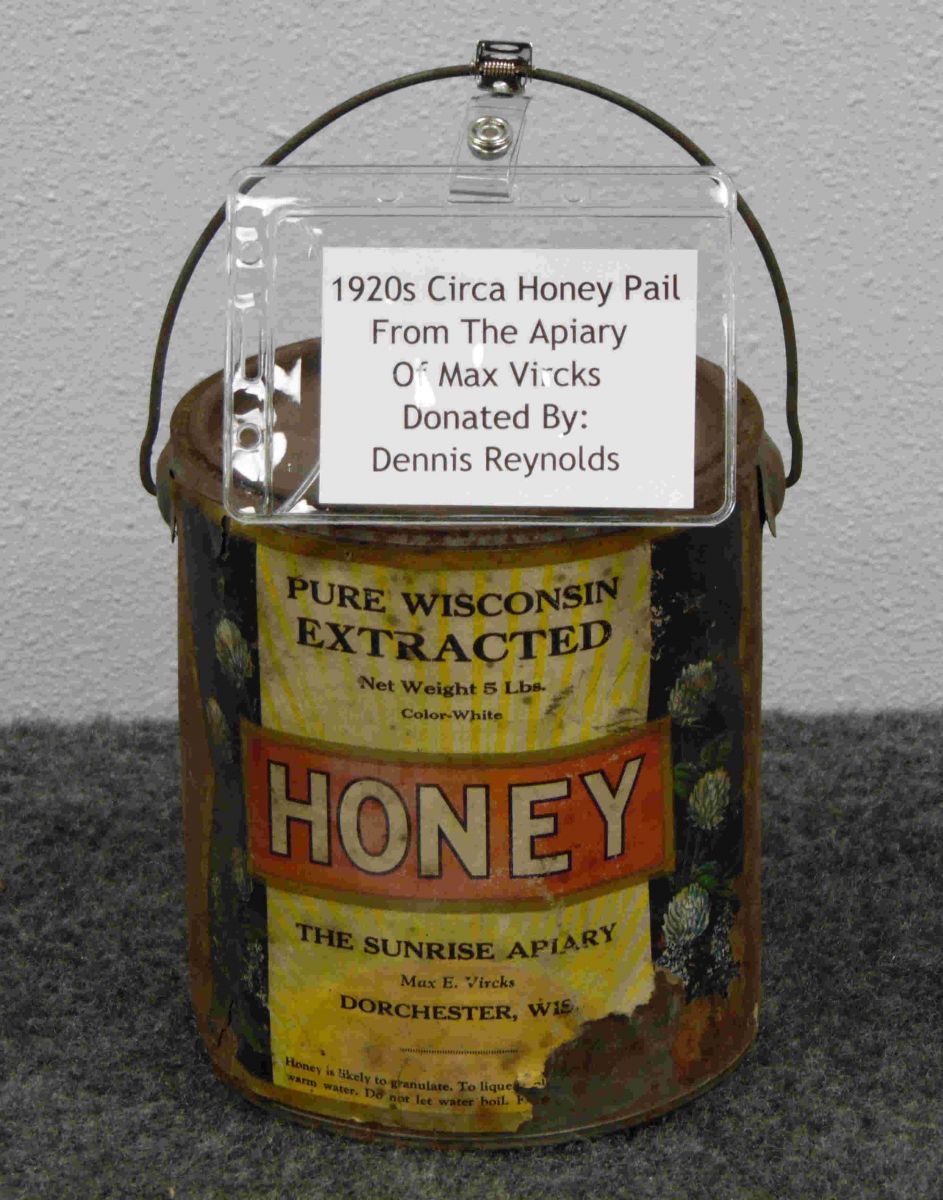
Artifact no. 32 – This door lock is 127 years old and it still works. It was donated by the Ernest and Helen Johnson Family in 2013.
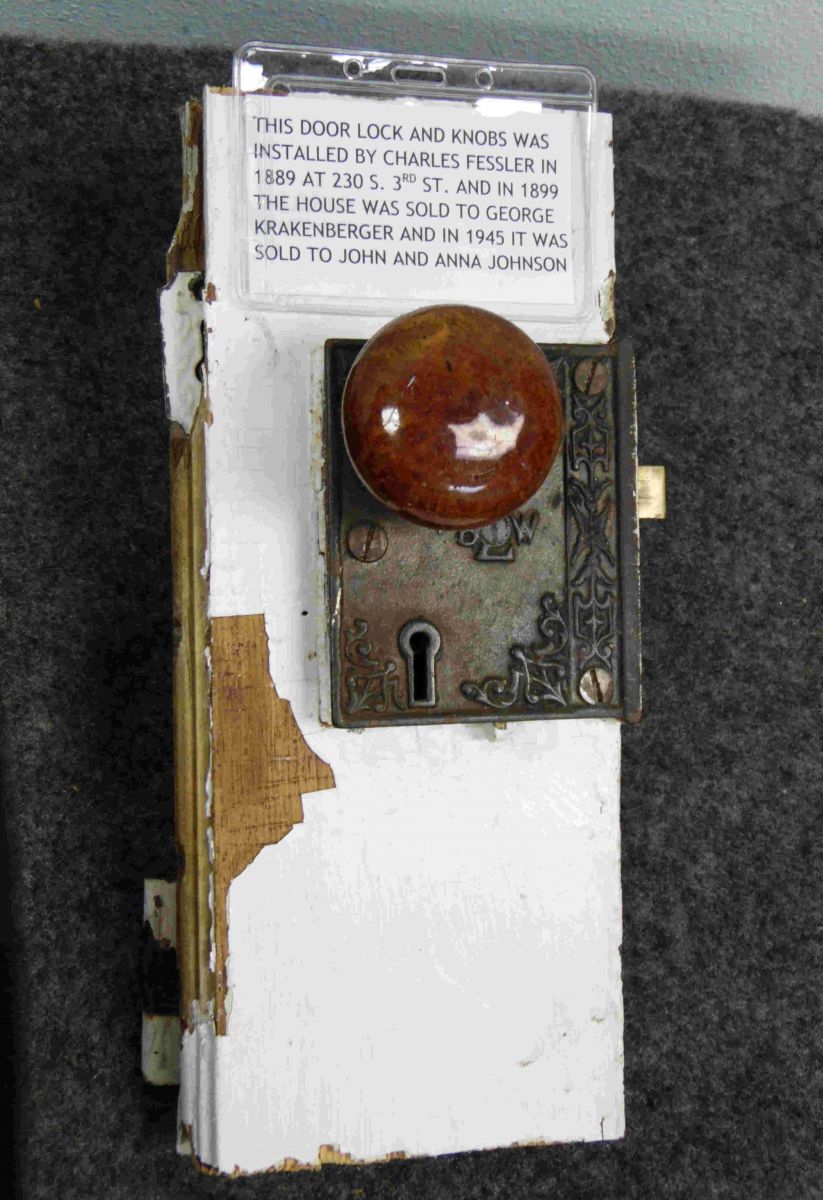
Artifact no. 33 – This whisk was made by George Tischendorf's grandfather in the late 1800s. It was made from the top of a White Pine and the bottom of the picture is actually the top of the pine tree. Donated by George and Betty Tischendorf in August of 2015.
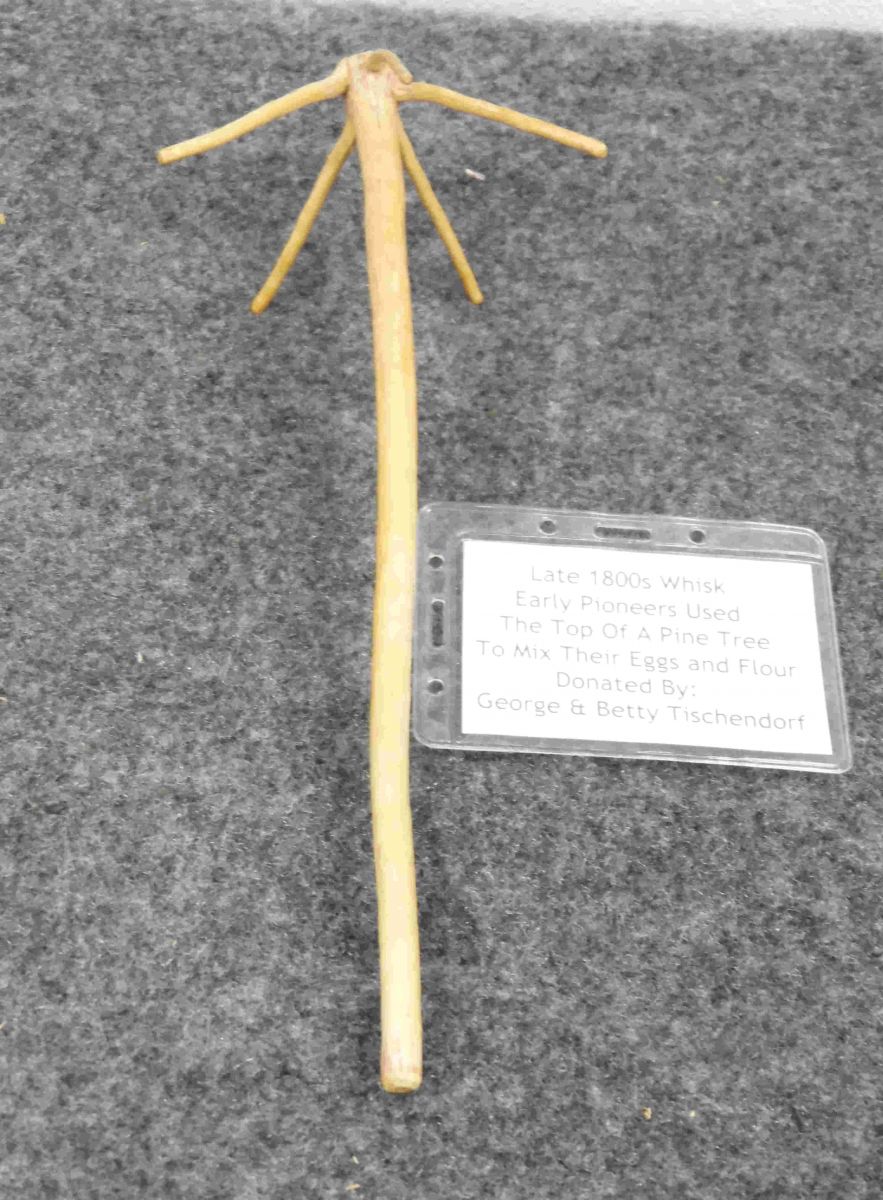
Artifact no. 34 – This Centennial Hat was the hat that everybody wore before, during and after the Centennial Parade which took place on
June 6, 1973. This particular hat was owned and worn by Bill Jantsch (father of this writer) and it was donated by the Jantsch Family in 2012. This hat was the very first official entry into the Dorchester Historical Center.
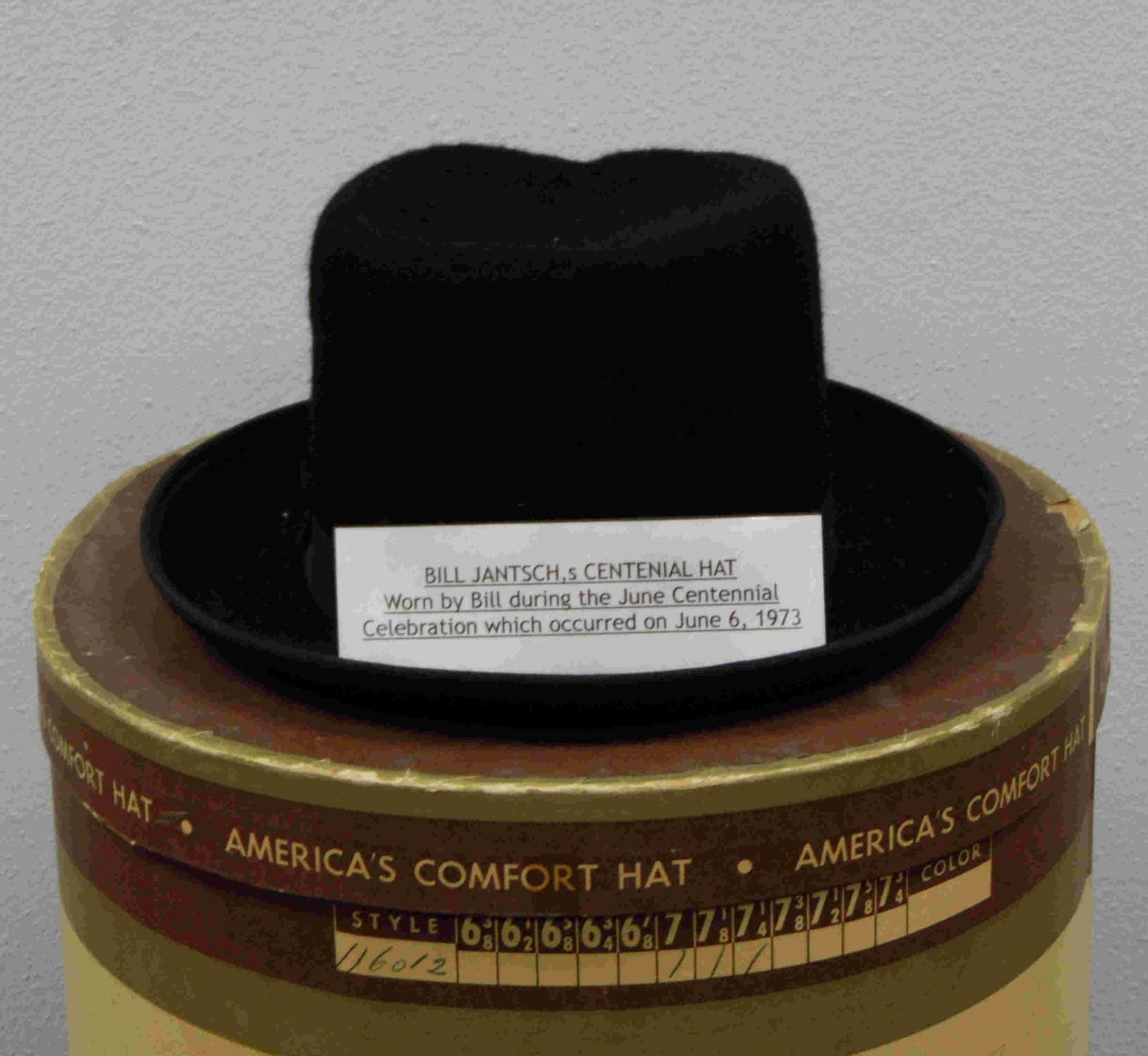
Artifact no. 35 – This “W” on an aluminum sheet of metal was discovered by the writer underneath a pile of rocks on the east side of the railroad track and just north of the railroad bridge that crosses the north branch of the Poplar River. It was bolted to a galvanized steel pole and at one time was standing tall alongside the railroad track. The “W' on the sign stands for (Watch) and was designed to notify the engineer of the railroad that he was coming to an auto and pedestrian crossing. Upon seeing the sign; he was to start blowing the steam whistle on the locomotive; thus warning anyone crossing the track to be aware of a coming train. Donated by Jim Jantsch.
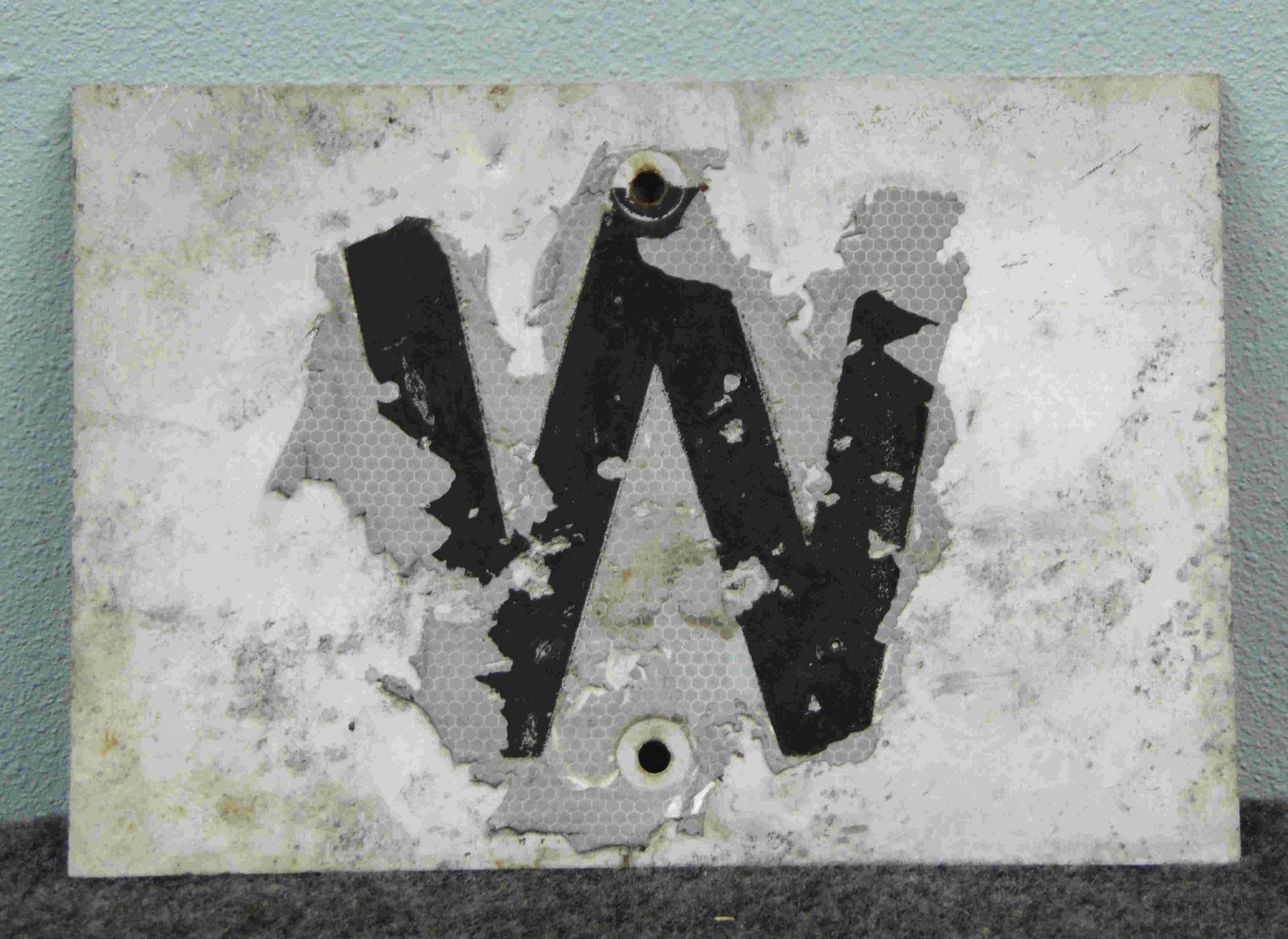
Artifact no. 36 - These jars were the envy of all gardeners and canning experts of the 1920s. They worked and worked well; ensuring that the canner's families would not catch a dose of bacterial infection. These jars belonged to Loretta “Werner” Jantsch. They were donated by the Jantsch Family in 2015.
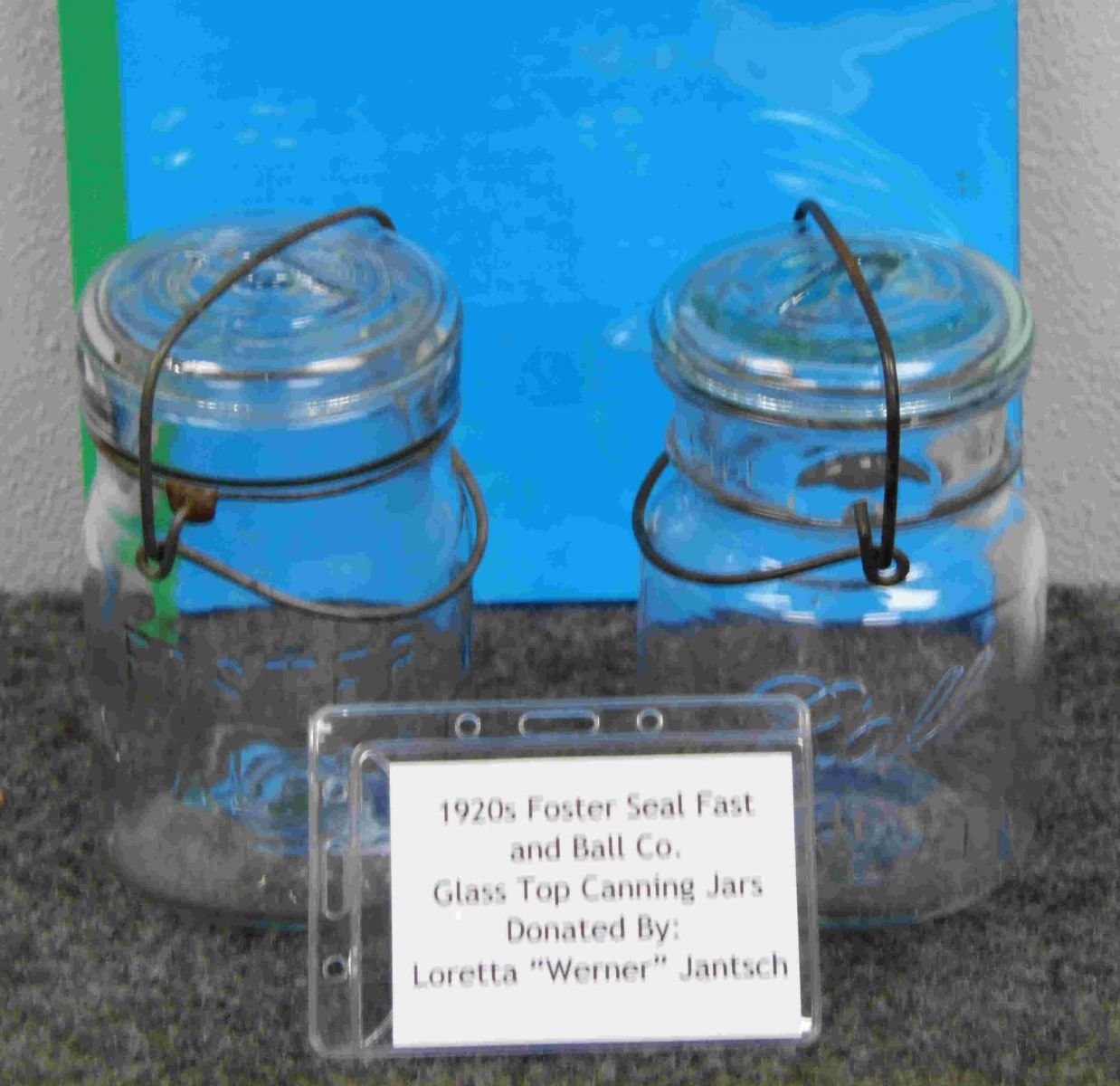
Artifact no. 37 – The Wisconsin Central Railroad Company came to Dorchester in April of 1873. The track was laid with iron rails which quickly led to twisted tracks due to freezing and thawing during the winter months. In 1878; steel was invented and in 1886 the track, plates and rail clips were replaced with the new and stronger steel ones. Below and in the center; you will see a flat plate from 1925. The spikes are believed to be from the 1886 relaying of track as they are not only heavily rusted but some of them are much smaller in size due to the rust. The same is true for the clips which attach to the under side of the track adjacent to the railroad tie. These railroad artifacts were picked up by the writer during the mid 1990s. Walking along the track – they would be lying all over the place. Obviously, when the railroad workers worked on the track; replacing worn out spikes and clips; the old ones would just be discarded.
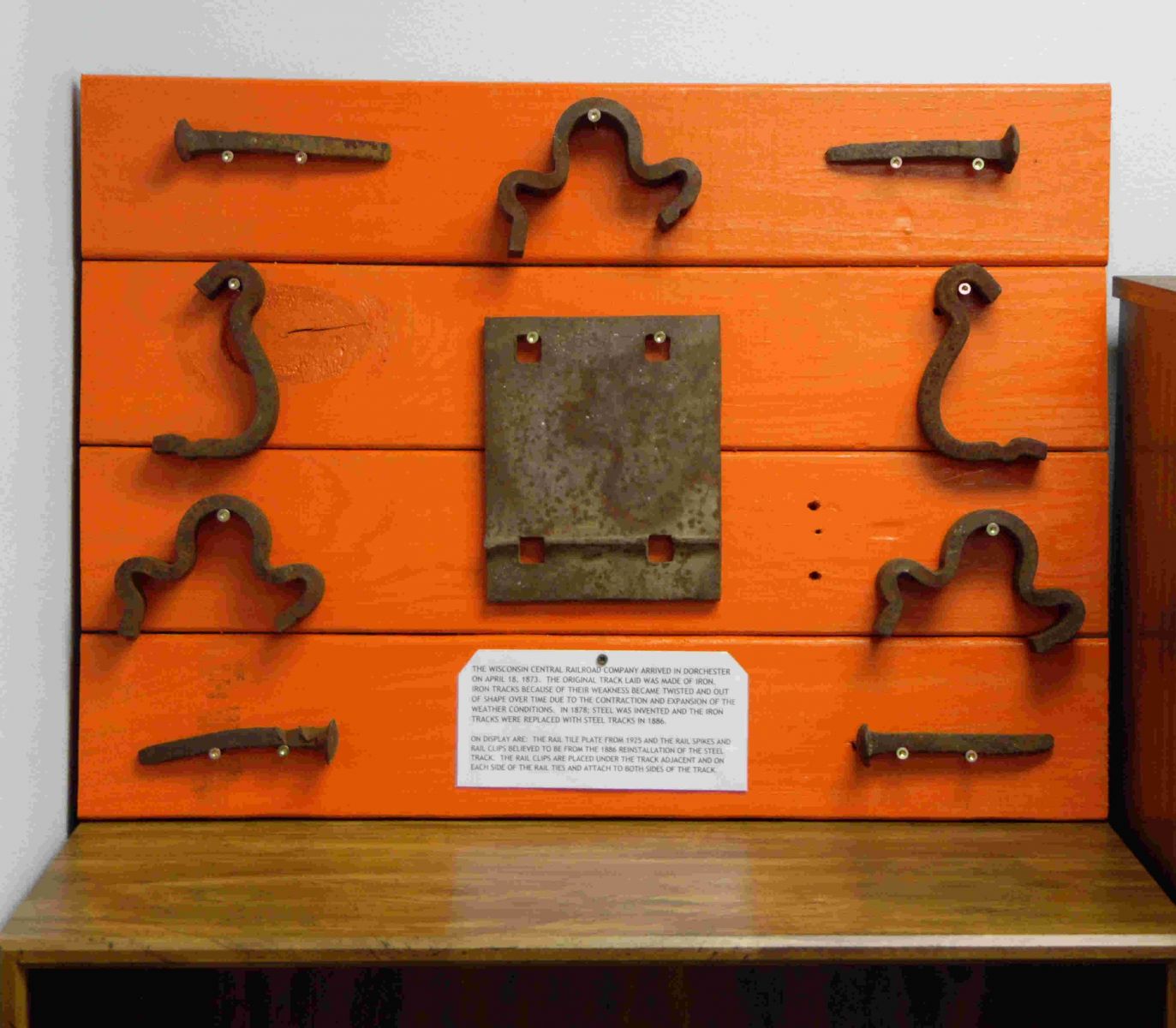
Artifact no. 38 – These old safety razors, soap cup and brushes are from around 1900 to 1925 and were owned and used by Johann (John) Jantsch and his two sons; John Jantsch Jr and William Jantsch. Each safety razor came in its own box and these instruments were coveted by all men. One difficulty with using these devices came when there was no hot water; which was more often than not. They were donated by the Jantsch Family.
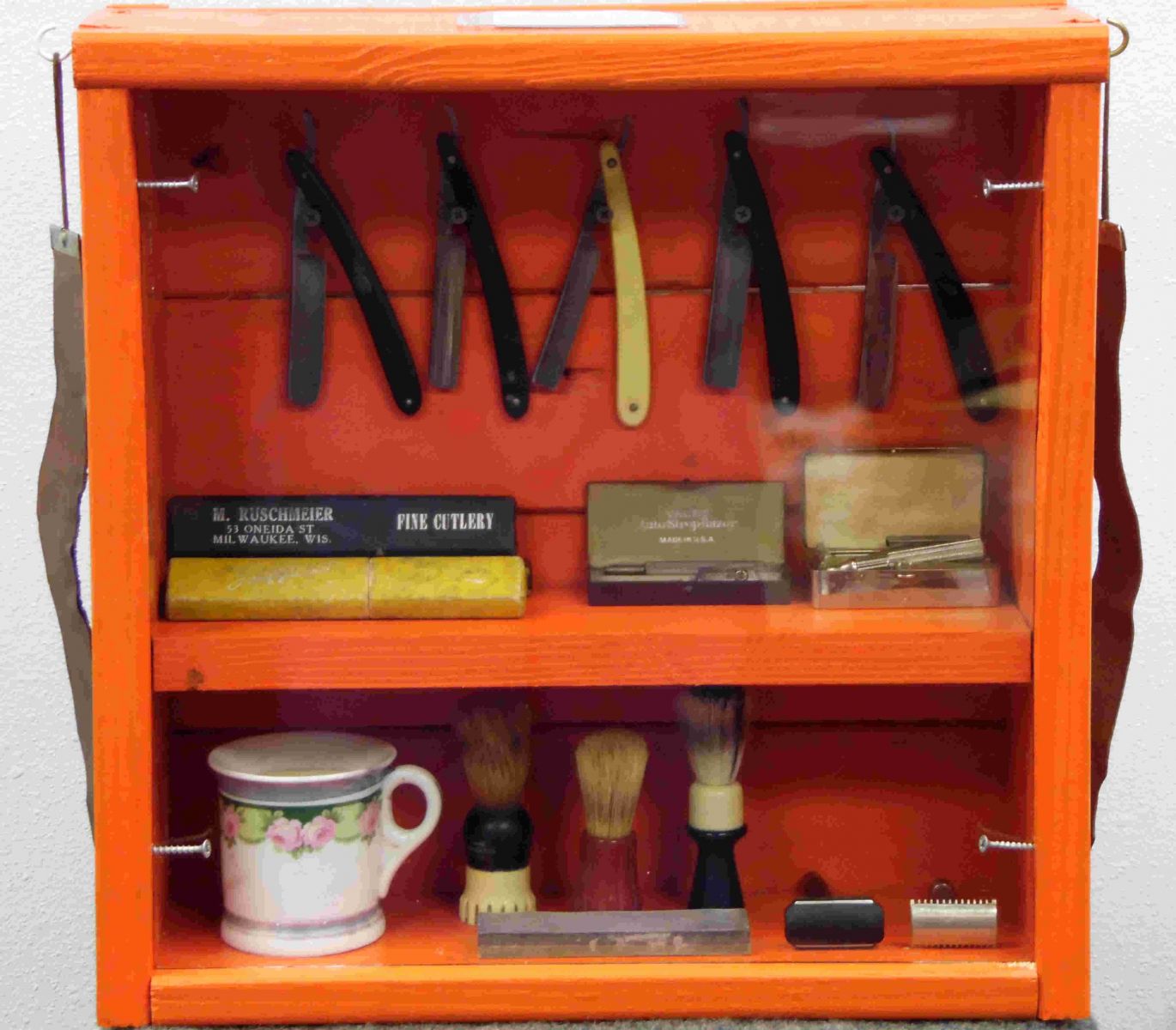
Artifact no. 39 - This stencil reads; VanDusen & Co. - Shaded “A” Dorchester Wis. It belonged to the “VanDusen Sawmill and Lumber Yard” which operated in Dorchester from 1880 to 1890. The stencil was used to mark the wood before it was loaded onto the railroad boxcars for shipment south to Milwaukee and Chicago. In this way; the unloaders at the destination knew which lumber should be removed from the boxcar. The stencil was donated by Ernie Mehner Jr. Ernie told me he got it from his dad Ernie Mehner Sr and he got it from his dad Edmund Mehner who got it from O.D. VanDusen in 1890. O.D. VanDusen was owner operator of the sawmill and lumber yard. The stencil shows that a Mr. DeLaney from Eau Claire was the maker of the stencil. A call to the Chippewa Valley Museum in Eau Claire revealed that Mr. DeLaney made copper stencils from 1877 to 1883 so describing this stencil as one from 1880 fits the parameters.
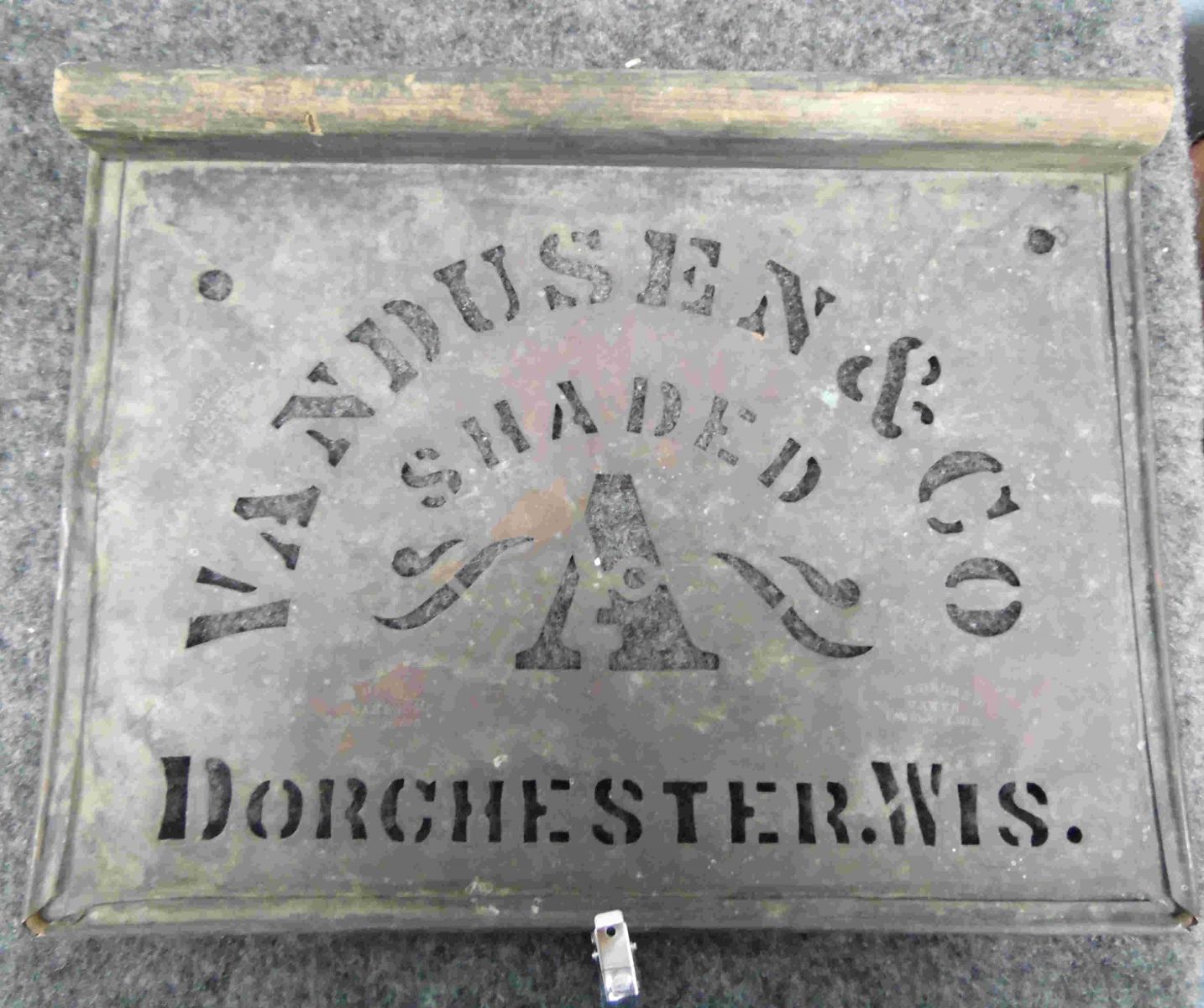
Artifact no. 40 – This is what the wood would look like after it was stenciled by one of the workers at the mill.
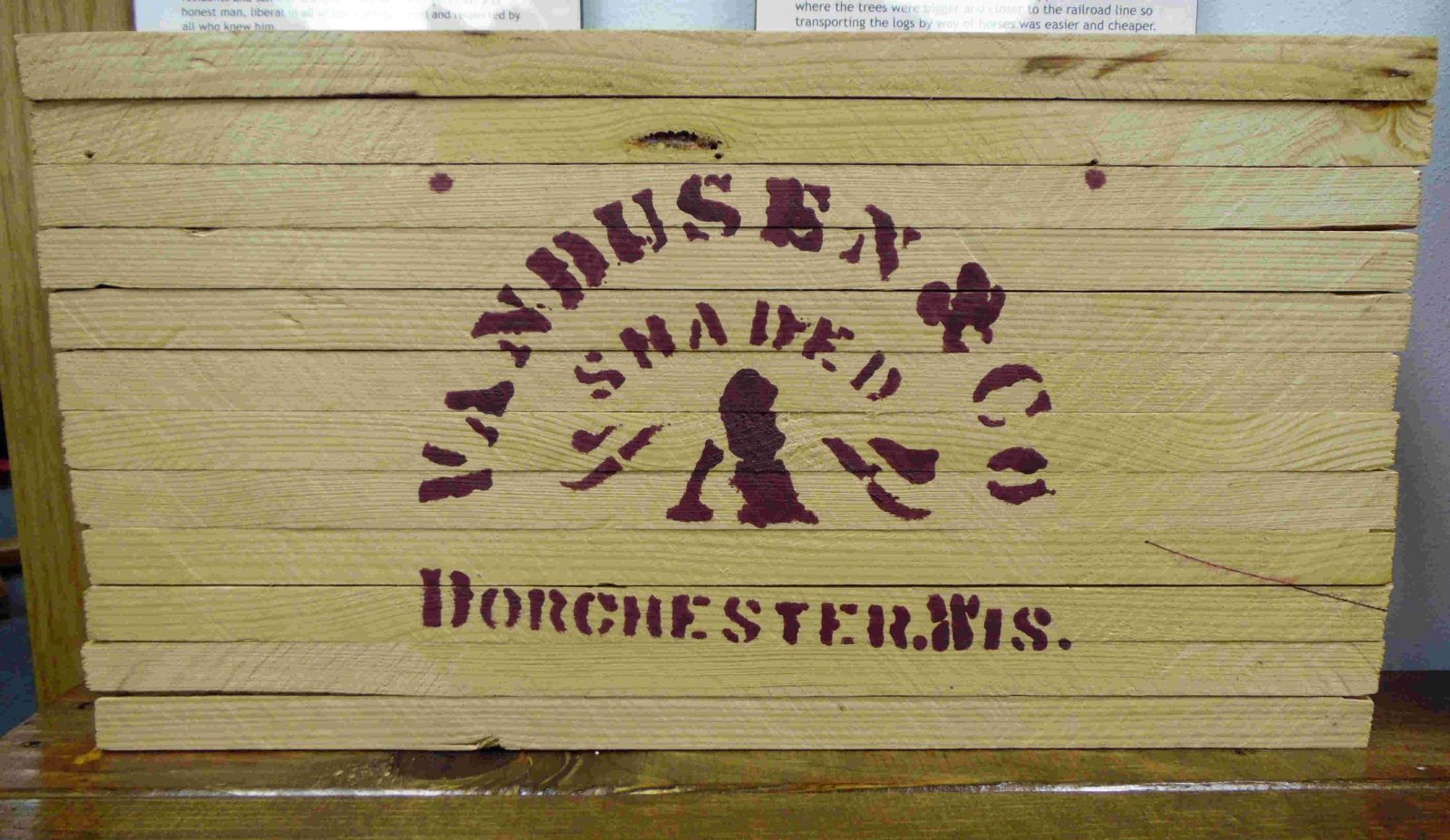
Artifact no. 41 - This peculiar looking piece of wood with the weird looking hook is called a “single tree yoke” and was used by the small pioneer farmer in the late 1800s; even up to 1940 by some. It was intended to be utilized by one person; leather reins would be attached to each end of the yoke and the other end attached to either side of the horse who would be pulling the plow or other device which would be attached to the hook in back. Of course the farmer walking in back of the horse would control whether the horse would turn or pull straight ahead. This particular single tree yoke was used by Ernest Neitzel who lived 5 miles west and 1 mile north of Dorchester. His daughter, Vera “Neitzel” Jensen donated the yoke in 2013.
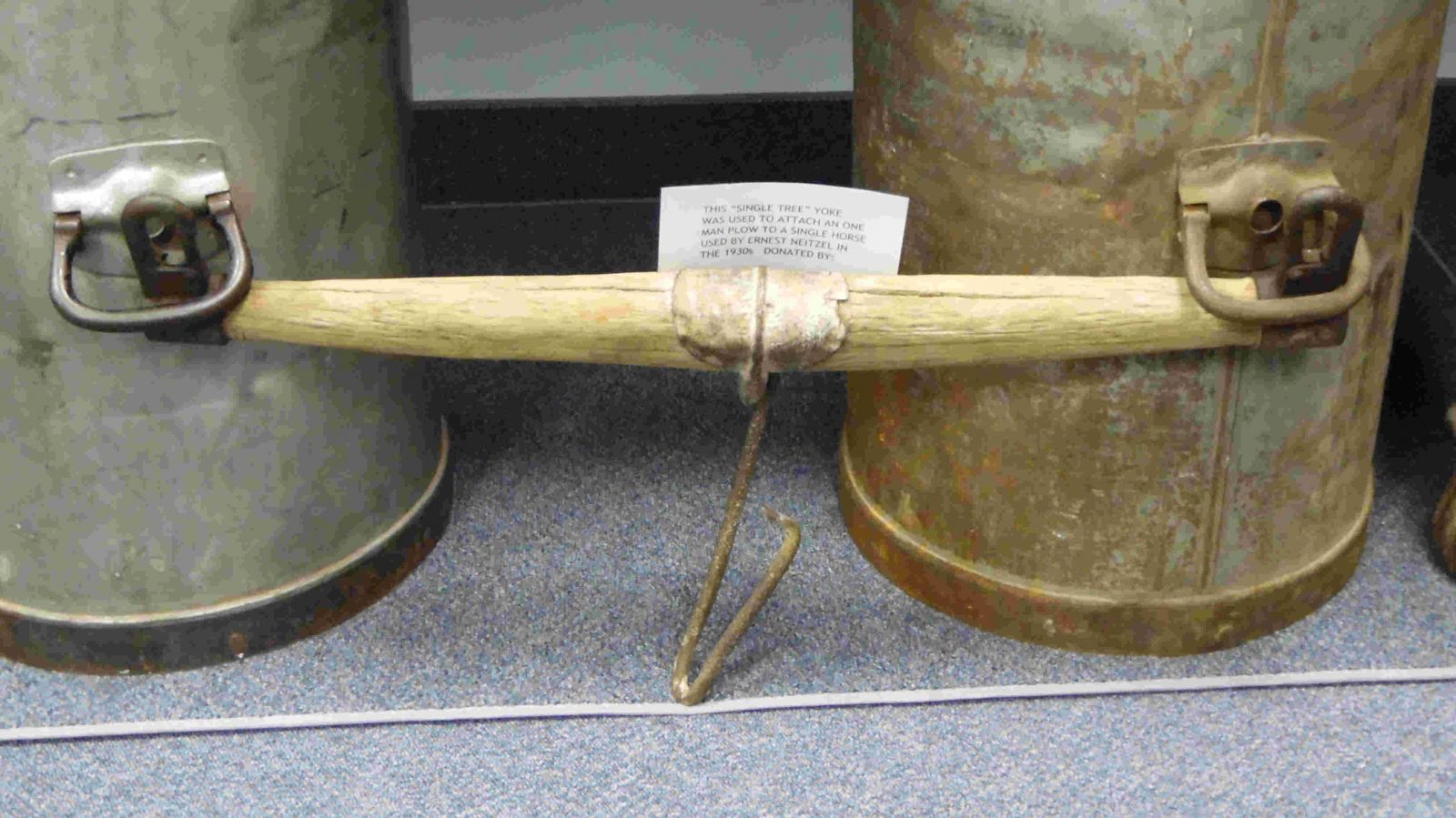
Artifact no. 42 – These milk cans were used in the dairy industry until 1930 or thereabouts. They were common fixtures in the Dorchester area and were used until someone figured out that the men who picked up milk from the farmer had to lift these heavy containers and that the turnover in workers was too expensive to continue using them. They are 15 gallons in size and that means they weighed when full 120 pounds plus about 5 lbs for the can or 125 lbs in total. Even larger cans were used around the turn of the 20th century and that required machinery that elevated itself to get the cans in and out of the truck and factory. Too much labor so evolution started and the cans eventually got smaller and smaller with the last cans used containing 10 gallons of milk and a weight of 80 lbs.
The can on the left was donated to the Dorchester Public Library in 1998 by Cletus Weber and the one of the right was made by William Schultz and donated by his nephew Albert Schultz Jr. in 2014.
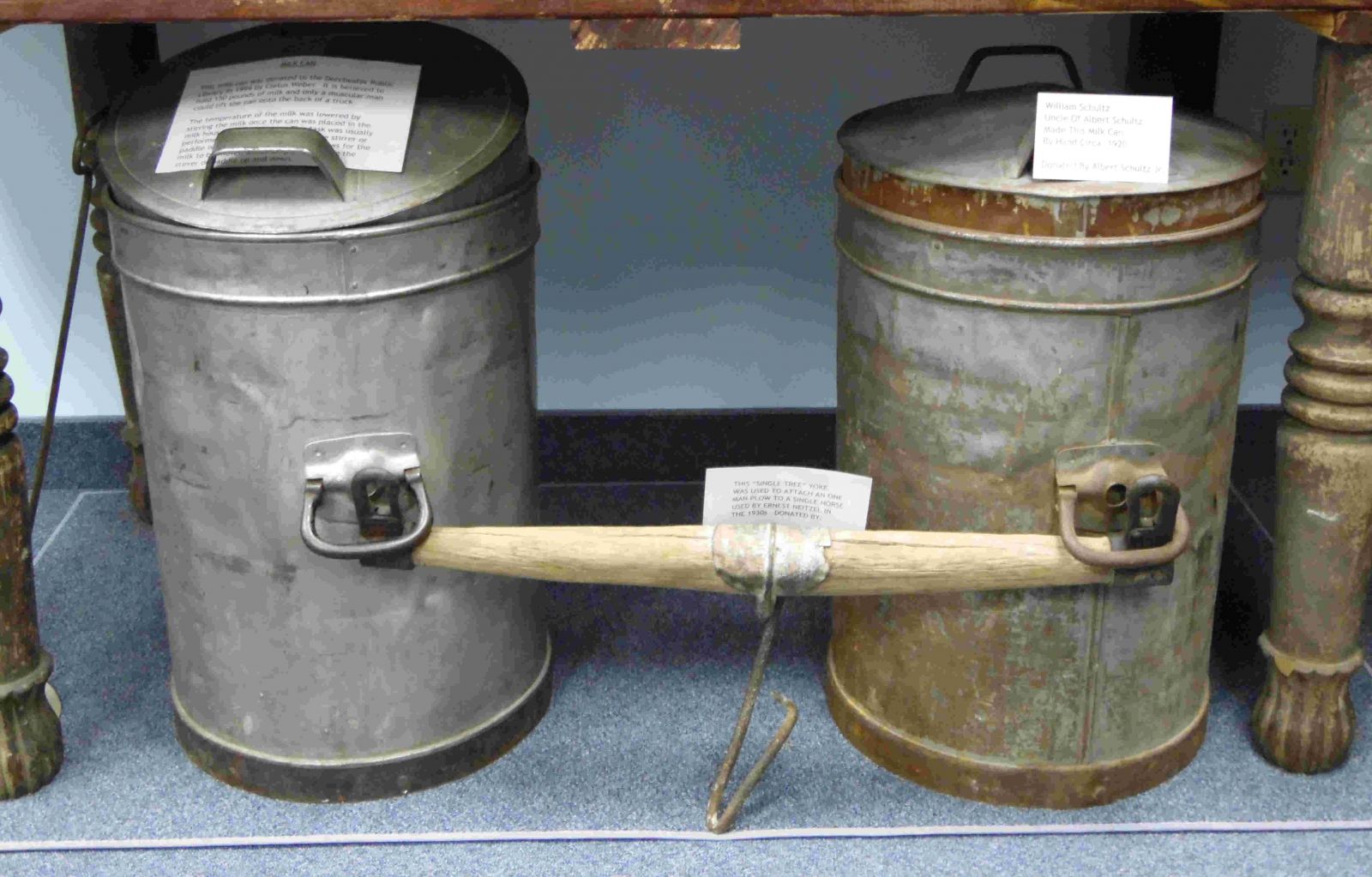
Artifact no. 43 – Bricks: one of the most desired of all building materials since the beginning of time. Therefore, the reason they are included in the Dorchester Historical Center. While it took some time to finally acquire these bricks; all of which are directly related to the Dorchester area; let me tell you, it was worth every minute I spent on this project. In the Colby newspaper of 1887; I found one sentence in the Dorchester news section of the paper and it stated: The Dorchester Brickyards are booming. I came across this one sentence in 2004 while researching material for the book I wrote “The History of Dorchester”. Dorchester Brickyards – never heard any of the old-timers talk about this. In late 2015; I happened to mention this to Ron Decker and he said I know where the brickyards was located. He informed me it was two miles north of Dorchester on Hi-Line Avenue.. He was right and to top that off – he had bricks from the brickyards that were used to build his grandfather's house. Those are the two bricks on the left. The next two are from 1890 and were part of Ashland Steel's Charcoal Kilns of which there were eight. Donated by Ron and Helen Busse in late 2015. The next one from 1895 came from Fred Gutwasser's hardware Store which was torn down in 2015. The next in-line came from the Lawndale School which was built in 1908 and was donated by Steve Etten. Next in line came from the St. Louis Rectory which was built in 1909. Next is from the St. Louis School which was built in 1913. Next is from the Liberty School which was built in 1914 and finally the 1930 brick from St. Louis Church.
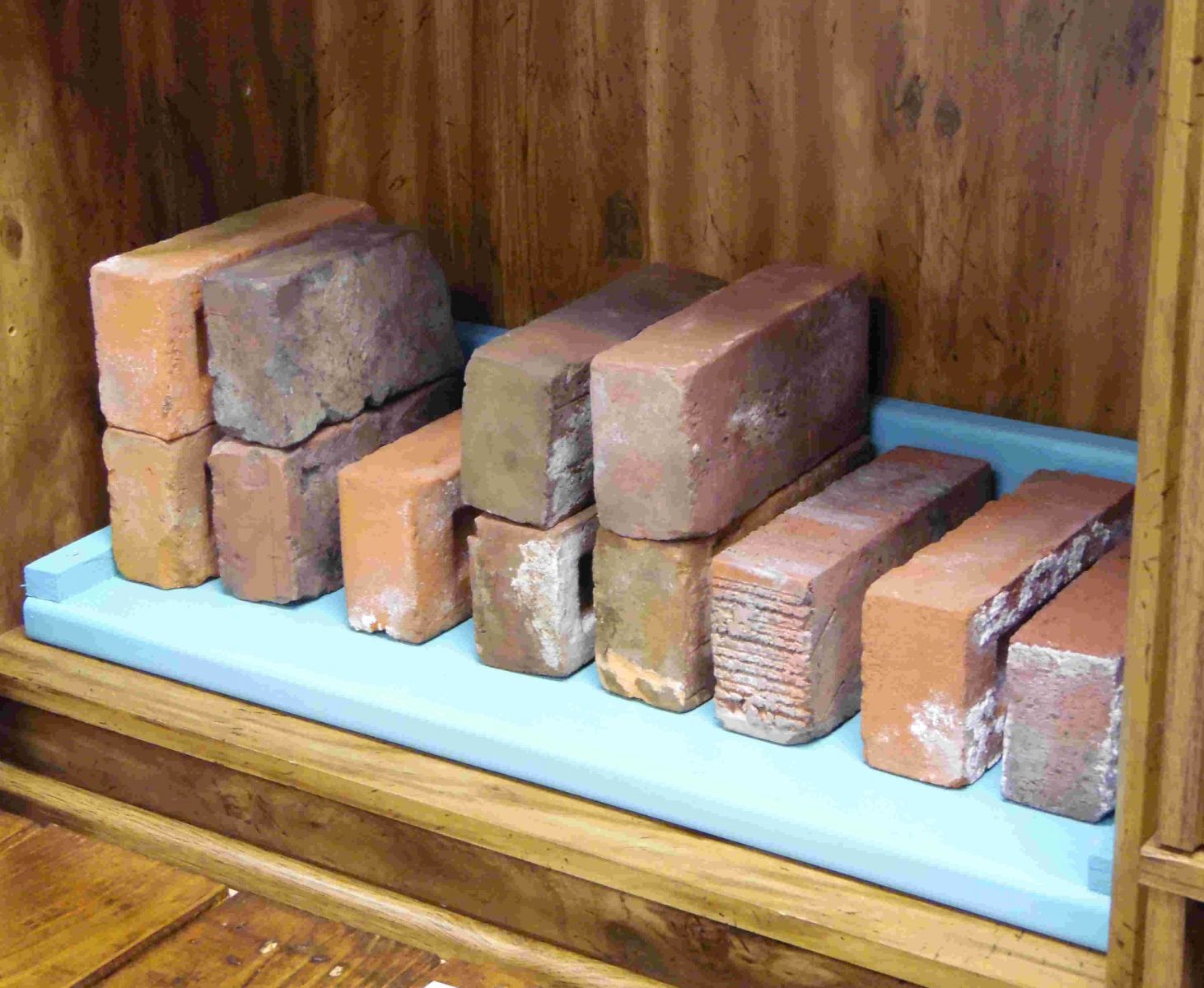
Artifact no. 44 - Whenever I give a tour of the Dorchester Historical Center – I often ask; do you know what this is???? Surprising; many respond with the correct answer; which is the beer bottle and ashtray holder that was installed in 1950; in the bowling alley area of the Dorchester memorial Hall and which was attached to the back side of where the bowlers used to sit. There was a bottom piece which was also attached to this upper piece and which permitted the bottle of beer to sit safely without falling thru to the floor. I obtained this piece when I cleaned out the stage area during the late 1990s.
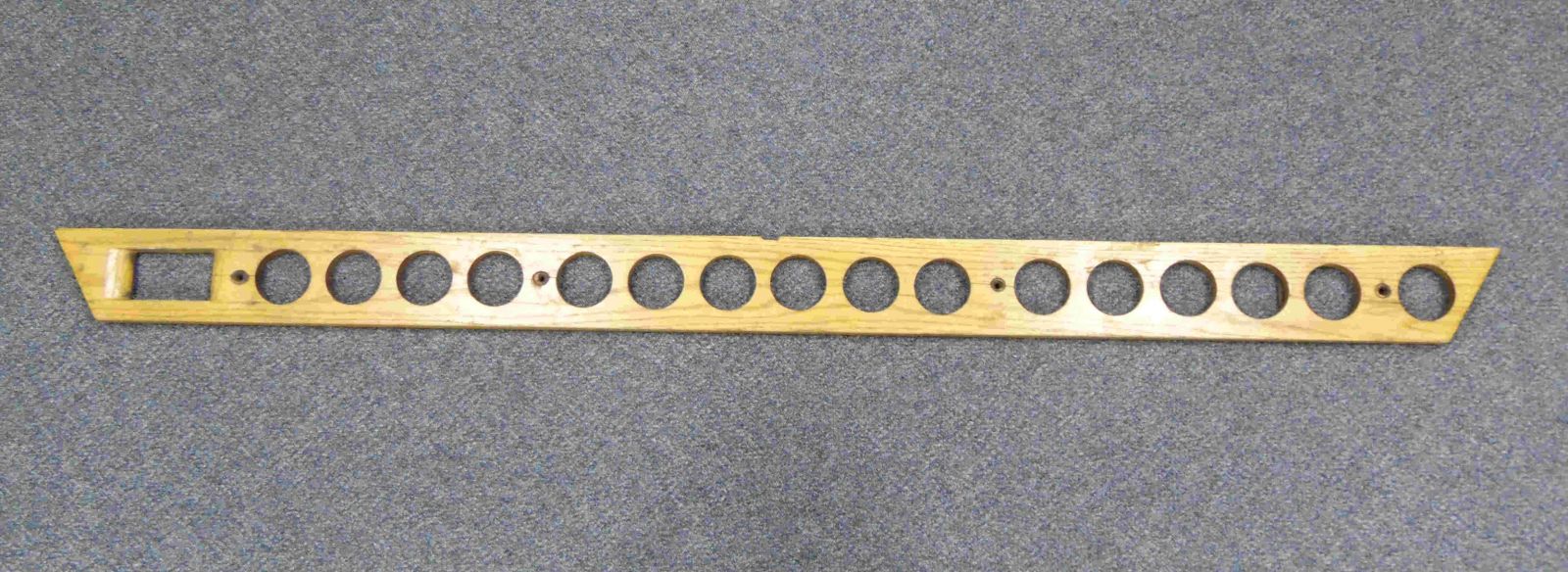
Artifact no. 45 – These cookie sheets were made by The John Buehrens Tin Shop in 1933. They were ordered by Loretta “Werner” Jantsch the year that she moved into the house they just purchased on South 2nd St. They were donated by the Jantsch family in 2015.
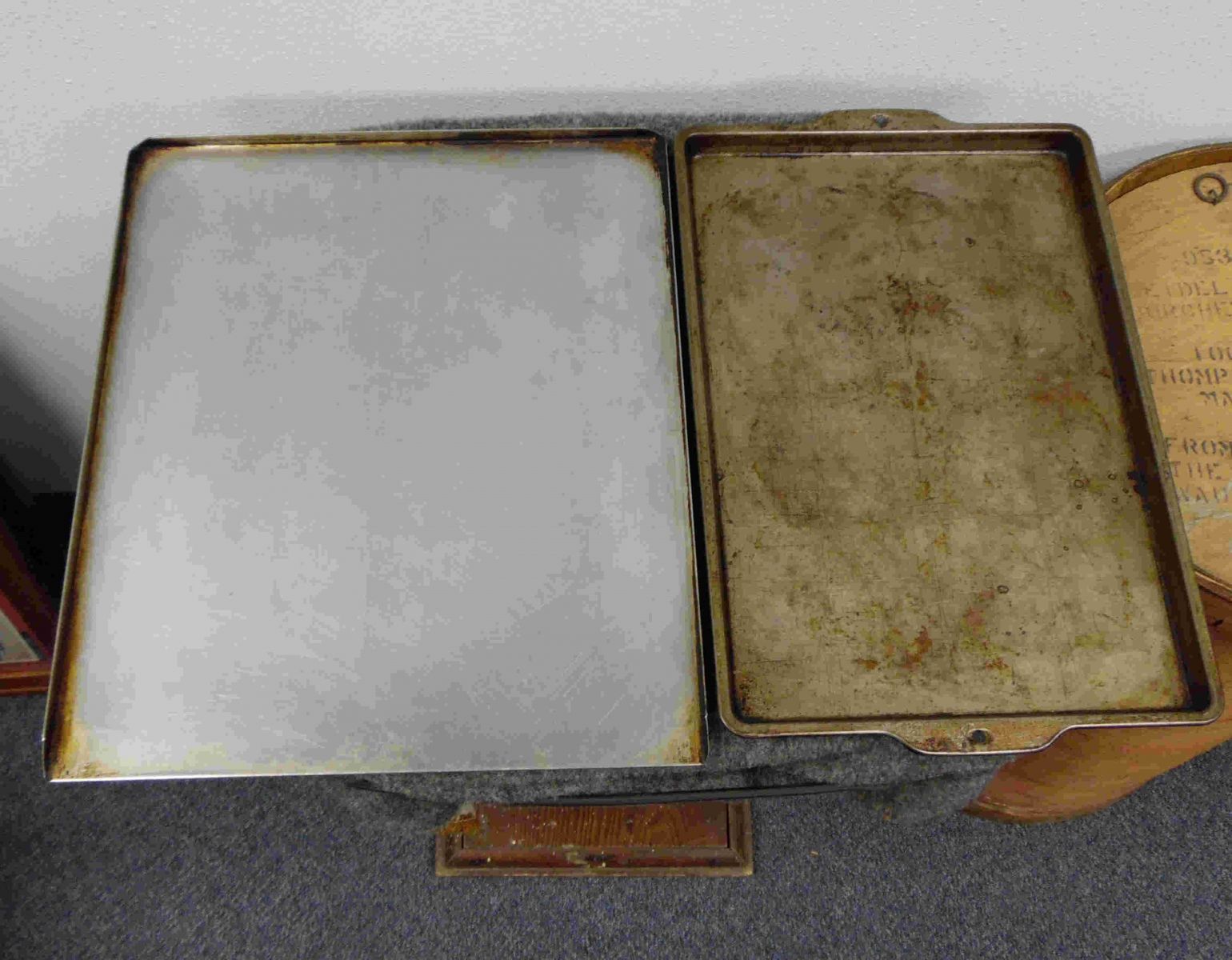
Artifact no. 46 – This certificate authorizes Frank Hiebsch of the Dorchester State Bank to sell Fire Insurance for the “Pennsylvania Fire Insurance Co.” and which was issued March 1, 1922. The certificate was donated by Dennis Bach in 2014.
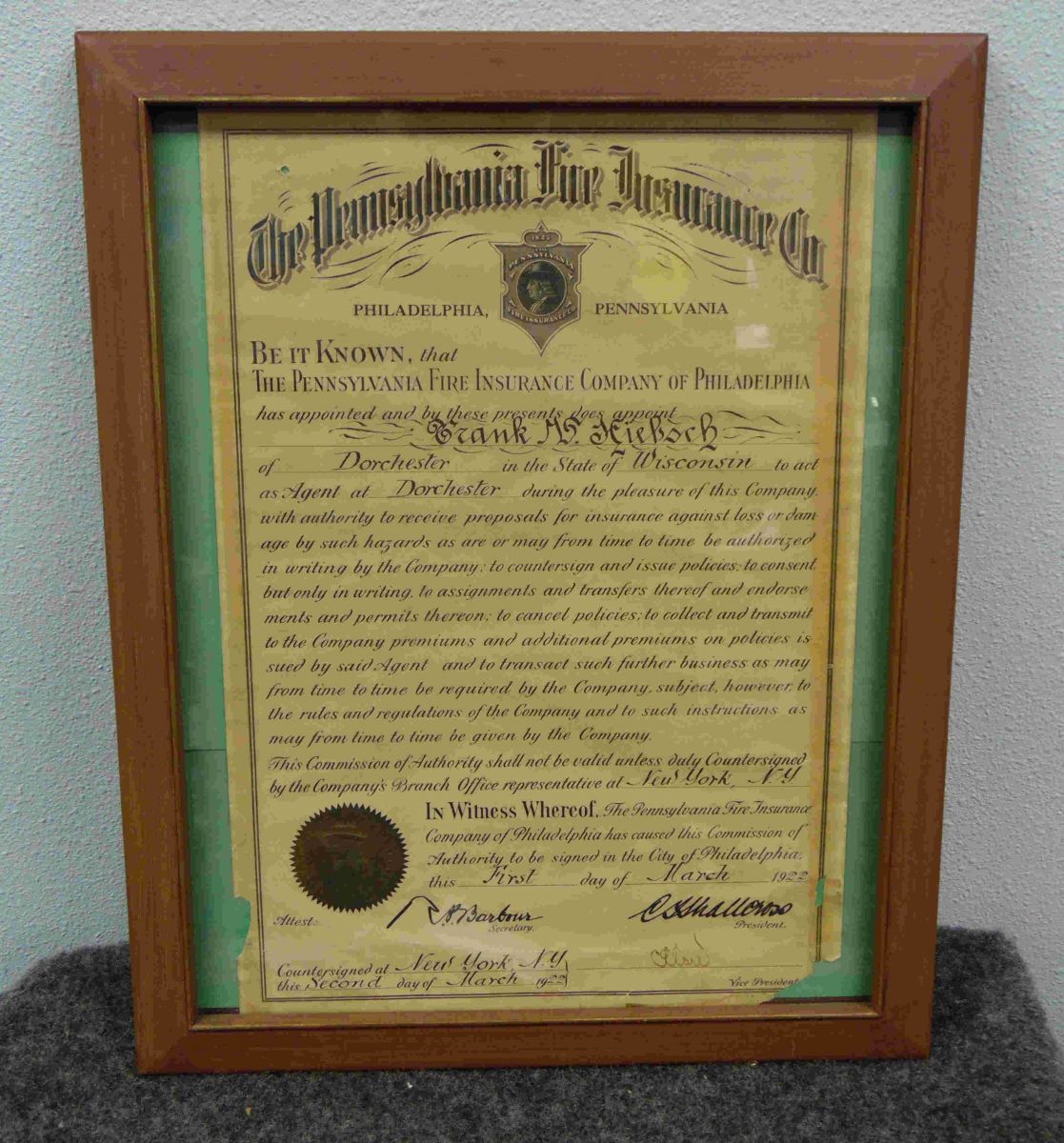
Artifact no. 47 – The two locks are from 1948 and 1952 and they were donated by the Dorchester Locksmith Doug Mueller.
The unreadable raffle tickets are the only ones that did not sell for the first fund raiser held in 1968 in order to obtain start-up funds for the Dorchester Recreation Park. Donated by Kurt Schwoch in 2013.
The wooden object is a traveler's seasoning container owned and used by Joe Jantsch during the 1930s-1940s-1950s. It seems Joe when traveling from Spokane, Washington to Wisconsin by bus and train wanted a certain seasoning to have an impact on the flavor of his food. Donated by the Jantsch Family.
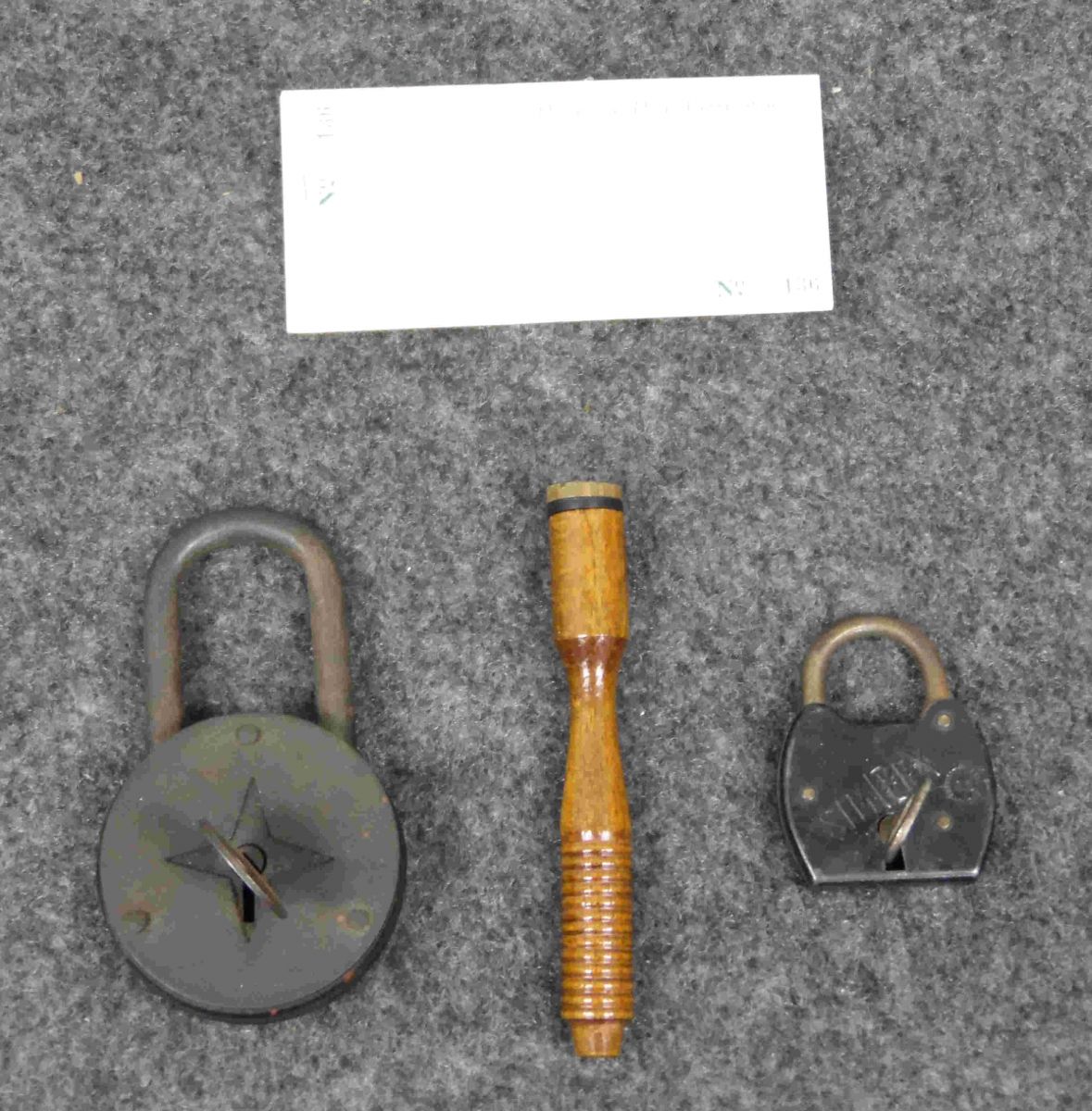
Artifact no. 48 – This picture was taken in 1940 just after the new 155 foot water tower had been installed. Don Schreiber climbed the tower and took this picture of the Pea Canning Factory. Don donated this picture in 2004. If you notice; there is a man walking north on the sidewalk just to the left of the house and Don informed me that the man was Ray Krakenberger. Ray was on his way home which was where Tom Reynolds lives now.
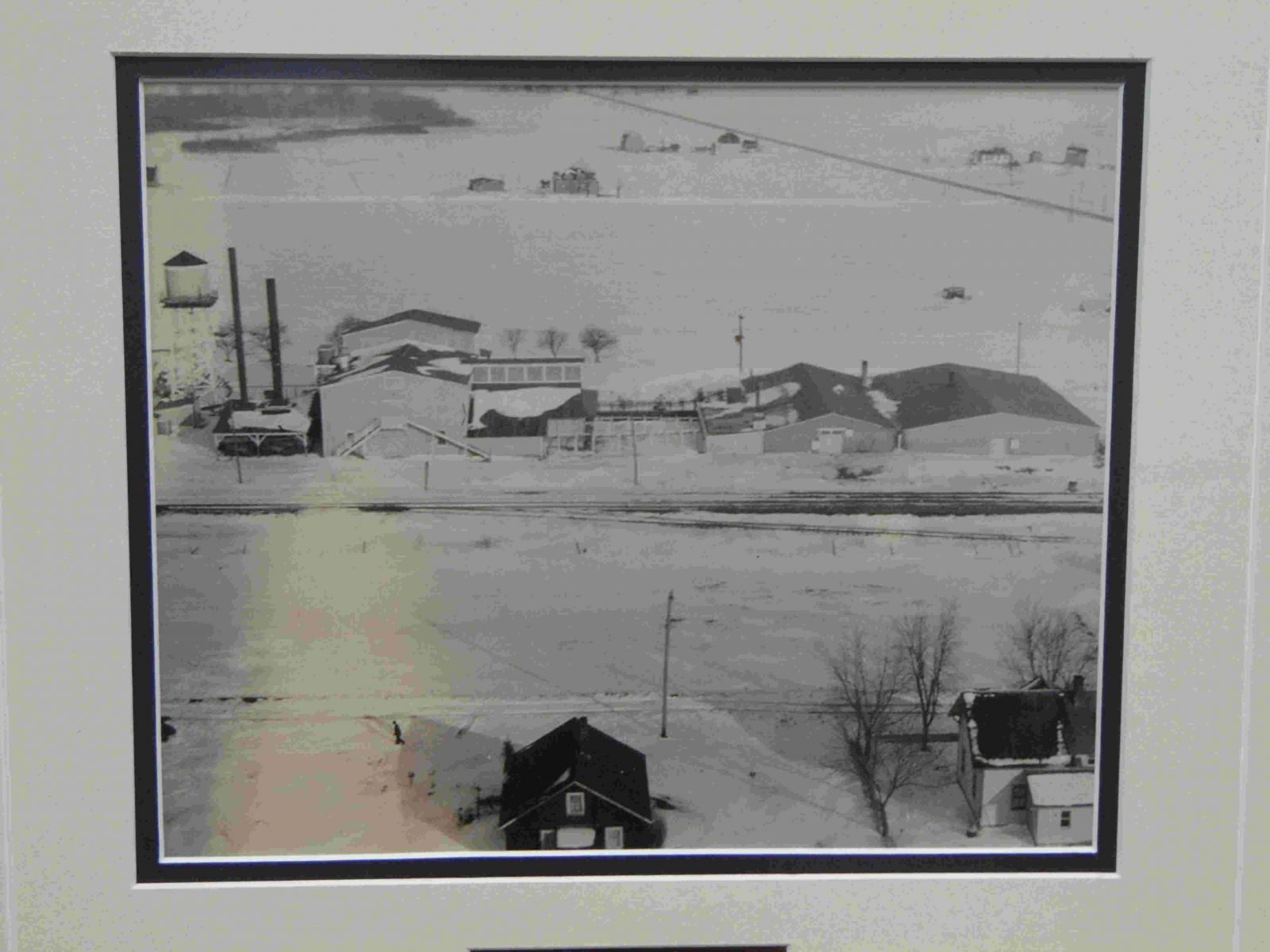
Artifact no. 49 – The two men in this picture are Walfred Olson and John Ryan; they owned and operated the Olson and Ryan Stone Company out of Dorchester from 1932 to 1936. On August 3, 1932; a lease was signed between the grantors (Herbert Baehr and Arnold Baehr) and the grantees (Walfred Olson and John Ryan) authorizing the Olson and Ryan Stone Company to mine and quarry stone from the Baehr farm. After four years; a second agreement occurred whereas on June 1, 1936; Herbert and Arnold Baehr leased the stone quarry to the Ellis Stone Company of Stevens Point for fifty years at a price of $500. I would say that the Ellis Stone Company got one heck of a deal. I talked with the CEO of the Ellis Stone Company and the only information that company records show is that they mined and quarried the stone from 1936 until 1952. No other information is available at this time.
The inscription at the bottom right of the picture simple says; Olson and Ryan Stone Quarry – Dorchester Wisconsin.
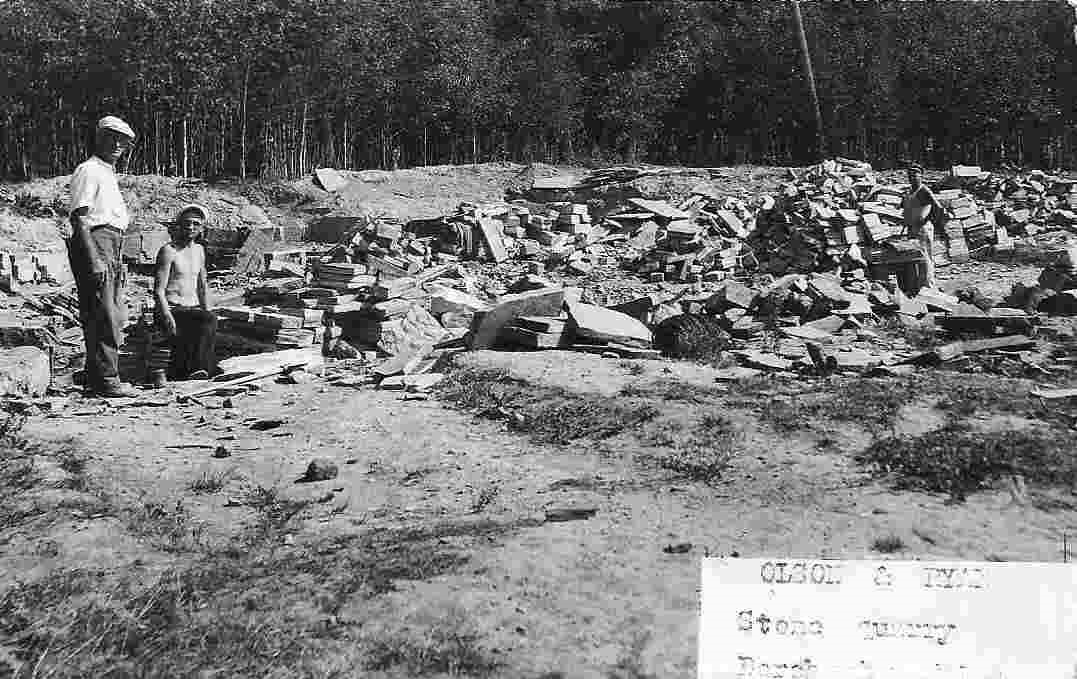
Artifact no. 50 – This is Daniel Miltimore; the first citizen of Dorchester. He arrived in 1873 as an agent for the railroad; his job was to sell as much land in the Dorchester area as possible for $5.00 per acre. He built the first mercantile store in 1874 on the site where the old legion hall now stands.
The picture was donated by Graeme Miltimore; the great grandson of Daniel, who now lives in Canada. Picture was taken in 1855.
